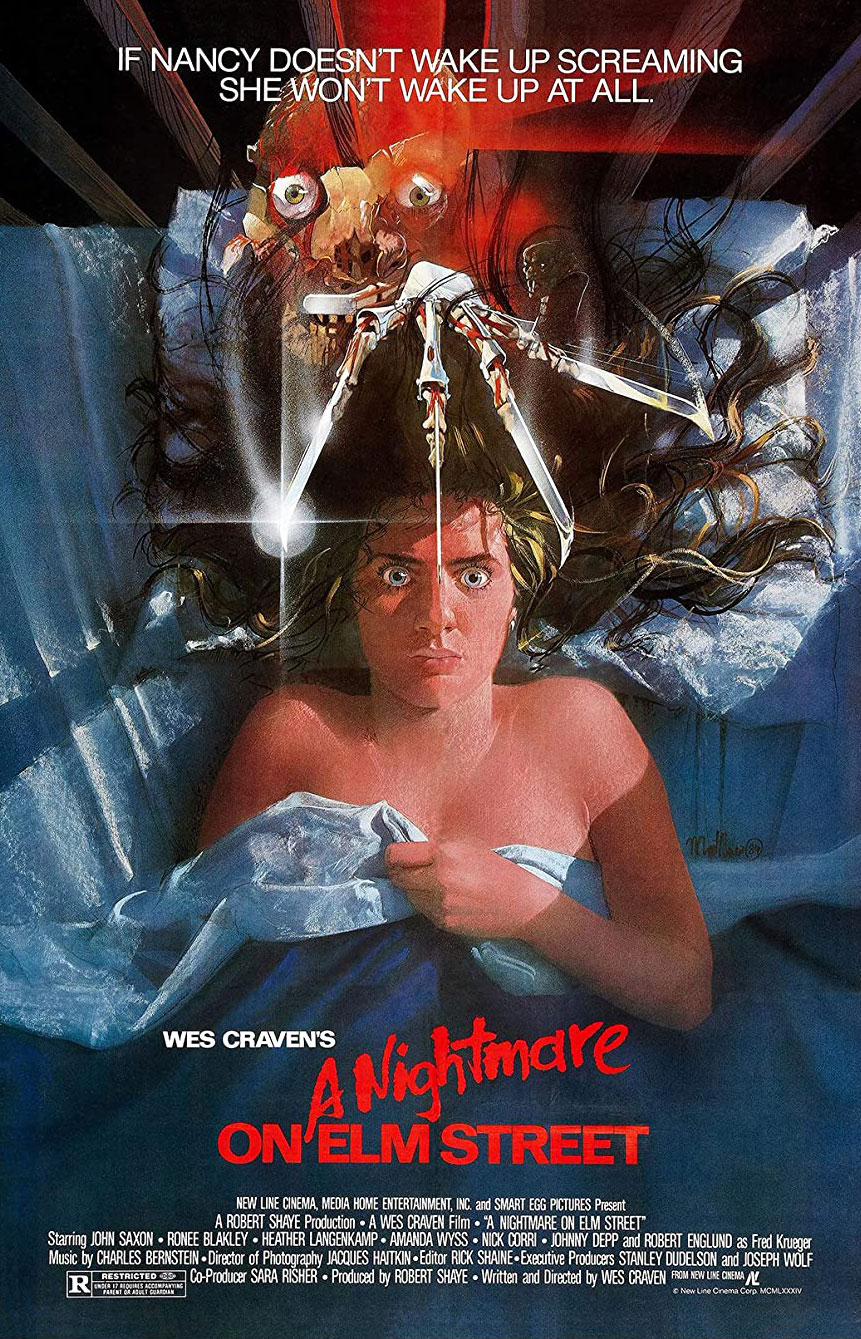This film is a horror classic. It’s the most significant film from a director, Wes Craven, who made many significant contributions to the genre. It introduced audiences to an iconic horror villain in Freddy Krueger, and spawned a film franchise that chugged along nicely for about a decade until the wheels fell off. There’s not much more that Missile Test can add, other than to urge any horror fan who has not seen this movie, to do so when the chance arises. Still, I’ll try to get 600 words out of this review.
I’ve seen A Nightmare on Elm Street numerous times since its release more than three decades ago. It’s a film that is improving over time. More and more horror dreck and countless imitators get released into the wild every year, and a competent, tight production like this can only get better by comparison. Just about the only thing in this film that is not getting better with age is the music by Charles Bernstein. That’s not because it’s bad music. It has hooks that are iconic in their own right — an accompaniment that has been featured in every movie in the franchise. My gripe is that the music sounds dated, with lots of synthesizer and fake drums.
For those who haven’t seen the film, a quick rundown is in order. Four high school teens — Nancy (Heather Langenkamp), Tina (Amanda Wyss), Rod (Jsu Garcia), and Glen (Johnny Depp, in his film debut) — are being stalked in their dreams by the spirit of Freddy Krueger (Robert Englund).
Freddy is a nasty piece of work, his face a suppurating wound of burned tissue. He wears a custom glove on his right hand, with razor-sharp knives extending from the tips of the fingers. These  blades aren’t his only weapon. He also has control over the teens’ dreams, altering the environment and morphing his own body to aid in hunting them down. Of course, if one of these teens dies in the dream, they die in real life.
blades aren’t his only weapon. He also has control over the teens’ dreams, altering the environment and morphing his own body to aid in hunting them down. Of course, if one of these teens dies in the dream, they die in real life.
There wouldn’t be much of a movie if all four of the central protagonists survived, so Freddy does get some licks in. Craven, bless him, provided viewers with copious amounts of blood to go along with the gore. It’s impressive how much fake blood the production used, especially in one death scene just before the climax of the film.
The most impressive thing about this film isn’t the effects, or some of the wonderful film techniques that Craven would use. Rather, it’s Craven’s masterful storytelling. For a film that’s 91 minutes long, it never wanders. Every scene, and almost every shot, is integral. There’s no fat anywhere.
It also has the benefit of a certain rawness to Freddy that future films lacked. There is no explanation for Freddy’s motives until well into the film, which rewards a first-time watcher with its mystery. In addition, this was before franchise fatigue had turned Freddy into a wise-cracking caricature of himself. Much of the horror around the character was lost by all the silly banter of the sequels. Freddy does have some ridiculous lines in this film, but he’s a much more frightening figure.
Craven and company also chose a very good cast for this film. All the young talent did well. A couple of Hollywood veterans were also in the cast, in John Saxon and Ronee Blakley, who played Nancy’s parents. Saxon was as reliable as always, while Blakley had superb moments. Her character knows something is going on with Nancy and her friends, yet she’s unwilling to face the truth. This leads her character into self-destruction, and oppressive behavior towards her daughter. She’s also creepy as hell.
A film like this could have lurched from set piece to set piece, with little thought given to story. The story in this film is a simple one. The fact that it flows so well is a testament to Craven’s skill, and not a knock. More films could do without the extraneous stuff.
Again, if one is a horror fan, A Nightmare on Elm Street is a must-watch. It’s disturbing, scary, bloody, and it gets the wheels turning. It’s not highbrow art, but horror is at its best when it thumbs its nose at such pretensions.
